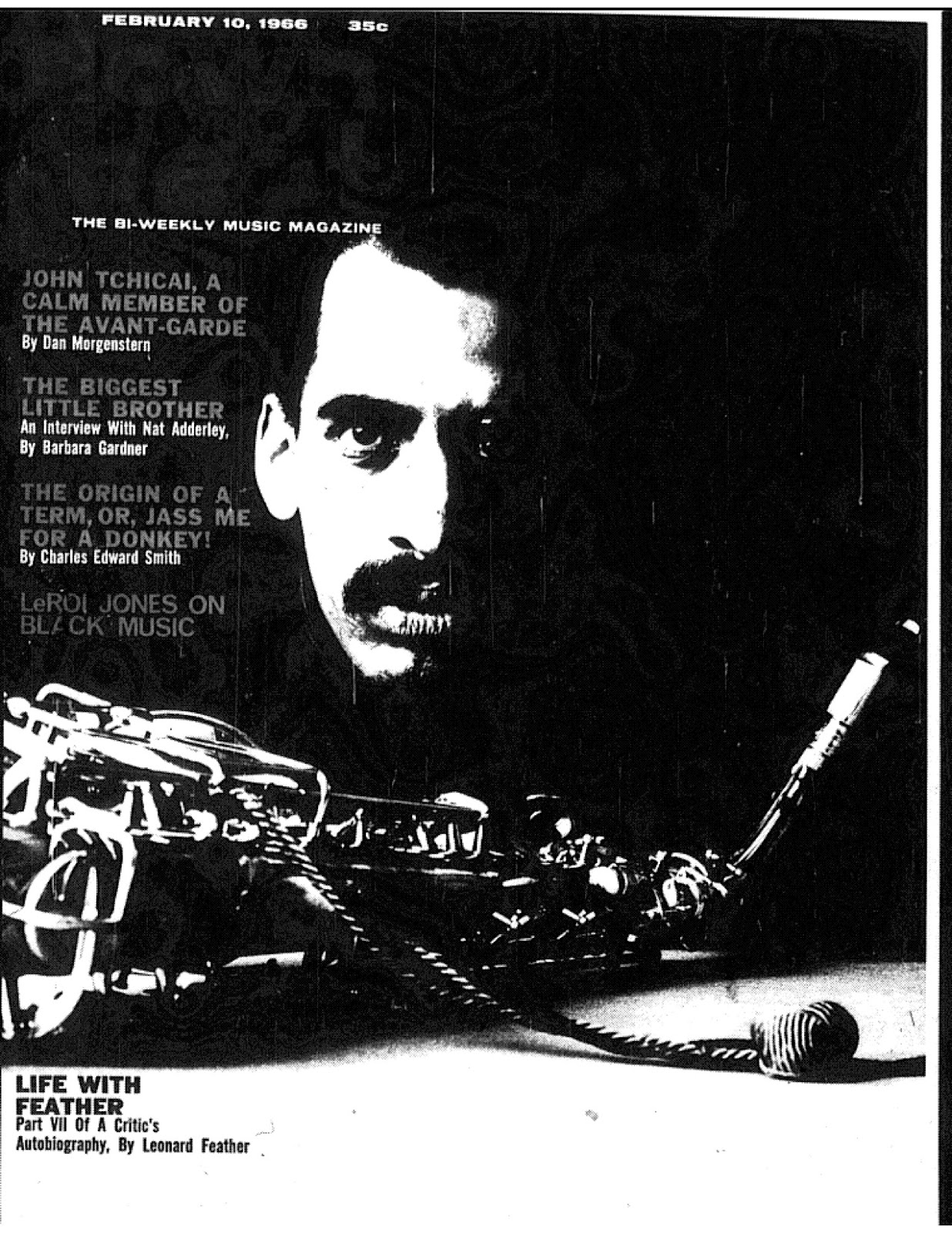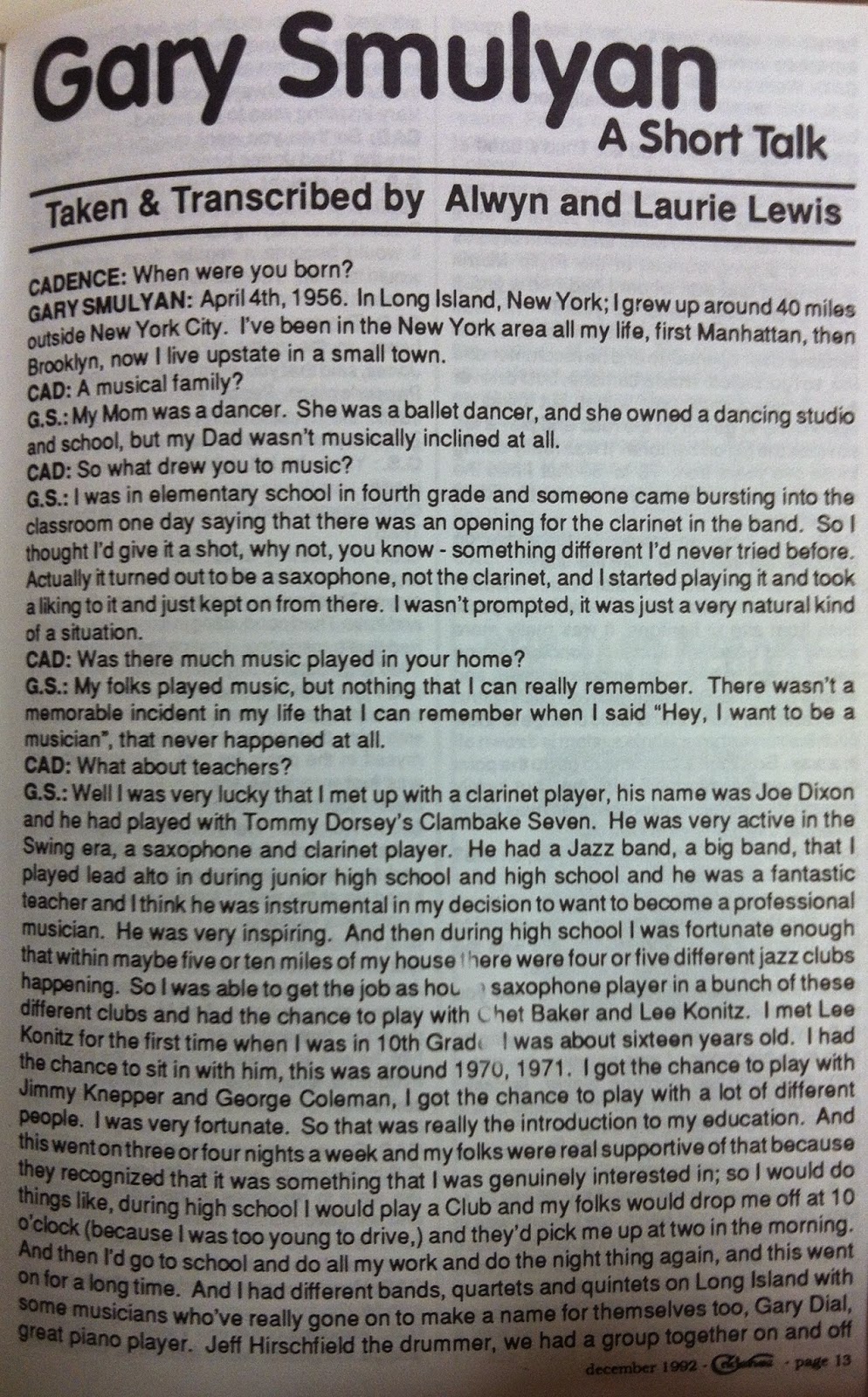 Well, today is International Jazz Day. While I haven't been quite as busy as Kevin Sun over at A Horizontal Search, I have enjoyed posting more than usual. Here’s a brief rundown of some of the sounds that have been bouncing around the apartment during Jazz Appreciation Month. Perhaps next year I will keep track as I go and make a more complete listening list. I made a point to check out some artists I’m not that familiar with, as well as albums I haven't listened to for a while and a few favourites too.
Well, today is International Jazz Day. While I haven't been quite as busy as Kevin Sun over at A Horizontal Search, I have enjoyed posting more than usual. Here’s a brief rundown of some of the sounds that have been bouncing around the apartment during Jazz Appreciation Month. Perhaps next year I will keep track as I go and make a more complete listening list. I made a point to check out some artists I’m not that familiar with, as well as albums I haven't listened to for a while and a few favourites too.
Charlie Parker
For some reason "Marmaduke” got stuck in my head one afternoon as I was out running errands, so I spent some time this month working on the melody. And as I worked on this post from my old practice notebook, “Billie’s Bounce” came into the picture too. Multiple takes of both songs have had plenty of plays this month.
Solo
Tchicai has flown under my radar, and after hearing this I'm keen to hear more. Recorded in 1977 this album features one track each on alto, soprano and flute. The last track is an alto/trombone duet with Albert Mangelsdorff. I'm digging Tchicai's rich tone on alto and his particularly distinctive soprano tone. I'm looking forward to finding more of his soprano playing especially. A bunch of FMP albums are available at Destination Out's BandCamp store.
The Waiting Game
I was listening to this a lot during March and it leeched over into April. This engaging duo recording with Marty Ehrlich is one of my favourite Nock recordings. The program mixes original compositions, free improvisations, standards and folk songs. Ehrlich moves between alto & soprano sax and clarinet & bass clarinet. Whenever I listen to this album I always think, "Man, I need to check out more Marty Ehrlich" - but that hasn't happened just yet. Nothing particularly earth shattering about this album, just really good jazz played by two artists with a great rapport.
Live in New York
It's never quite the same, but it is nice to have a souvenir from a gig you attended. In some ways, I remember the atmosphere more than the music - it was great catching up with fellow sax-traveller Bastian Duncker and there was a definite buzz in the crowd. The music was very enjoyable and this disc (compiled from the two sets that night) is an excellent reminder. This was my second chance to hear Bennink (on snare drum, floor, body, music stand, floor etc) and Moore (as/clari/b.clari) with the remaining third taken by the accordion of Holshouser (who was new to me). I’m pretty sure I made notes on this gig but I haven't found them yet. If I do, it will be nice to revisit that moment back in 2009 along with the recording. Fans of Clusone Trio will want to check this out.
John Carter & Bobby Bradford
Seeking
Like Tchicai, here’s another reed player that has been under my radar. Mark Weber put me on to them and I've finally got around to having a listen. Carter alternates between, tenor & alto sax, clarinet and flute and forms a great front line with Bradford's trumpet. So far I'm liking what I hear. Anyone interested in Ornette Coleman's recordings from the 1960's will want to check out this group. Seeking led me to pick up Flight for Four, recorded by the same group a couple of weeks earlier in 1969 (which I haven't listened to just yet). Mark has been compiling a Bobby Bradford Timeline - lots of great info and photos too.
Ornette Coleman
Live recording from Italy in 1974.
Not the greatest fidelity but interesting nonetheless. I have only skimmed through Ornette's output from the 1970s, so maybe this will be the trigger to dig a little further. Alongside Coleman are Sirone (b) Billy Higgins (d) and James Blood Ulmer (g). I haven't listened to much of Ulmer's work and his playing grabbed my attention - it's nice to hear some comping behind Ornette and Ulmer's solo voice is very distinctive too.
Not the greatest fidelity but interesting nonetheless. I have only skimmed through Ornette's output from the 1970s, so maybe this will be the trigger to dig a little further. Alongside Coleman are Sirone (b) Billy Higgins (d) and James Blood Ulmer (g). I haven't listened to much of Ulmer's work and his playing grabbed my attention - it's nice to hear some comping behind Ornette and Ulmer's solo voice is very distinctive too.
Mal Waldron
Blues for Lady Day
Aside from some albums with Lacy (which led me to this one), I don't have much Waldron in my collection. This is a solid solo piano outing from 1972 featuring standards associated with Billie Holidays. The last two tracks are live recordings (also 1972) from a trio with Henk Haverhoek (b) & Pierre Courbois (d) playing a couple of Waldron originals. While this album didn't blow me a way I'm keen to hear more from Waldron. Any recommendations are appreciated.

Earl Coleman“Yardbird Suite" This recording from 1948 features Coleman singing the lyrics Bird wrote for his tune less commonly referred to as “What Price Love?” That alone makes it worthy of a listen. On top of that, Fats Navarro is at his relaxed, swinging and melodic best during his muted solo and Don Lanphere also contributes a fine tenor solo.
Imaginarium
I’ve been hanging out to hear this album, and I finally picked it up this month. It was the presence of alto saxophonist Christian Weidner that grabbed my attention - along with the instrumentation (Harp/ Sax/Bass). The compositions are split between Pechlof & Weidner (as well as one from Debussy). The playing is unhurried and spacious - it demands your attention as it's not smacking you in the face. A very nice album and I’ll probably right some more on it. Don't sleep on Weidner - he's got a beautiful tone and wonderfully melodic approach.
Miles Davis
In A Silent Way
I hadn't listened to this album in years. I'm not sure what made me pick it up again, but I’m glad I did. The last time I heard this album I don't think I even owned a soprano saxophone, so this time around my ear has been drawn to Wayne Shorter's playing. There's a floating quality to Shorter's entrance on "Shhh/Peaceful" (around the 9 minute) that gave me a kick the first time I heard it (probably the first time I had heard him on soprano too), that brought a smile to my face this time around too.
Lyle Ritz
How About Uke?
This was a chance purchase while doing some in store browsing at Dusty Groove. I was completely unfamiliar with Ritz, saw it and thought, "Ukulele.... why not?" It's a really nice sounding recording and captures the uke tone really well. I particularly enjoyed the chordal playing from Ritz. Throughout the album he teams up with Red Mitchell (b) and Gene Estes (d) and Don Shelton (flute) joins them for five tracks. The album has a feel-good vibe to it.
Rahsaan Roland Kirk
I Talk With The Spirits
I was listening to Kirk’s 1964 all-flute outing during March but it also got some air during April (I was playing along with the melody of the title tune for a while too). Kirk's flute playing is not quite as rambunctious as his sax work. On second though....perhaps it is! Either way his personal approach still leaps out on flute. I have just been reunited with The Inflated Tear (after somehow leaving it in NZ) so that will definitely be getting some airtime soon.
Charlie Mariano
Helen 12 Trees
I'm not sure how I ended up here, but sometimes you just feel like something a bit different... world-jazz-rock-fusion anyone? I guess Charlie Mariano must have been on my mind. Interesting line-up - violin, electric/acoustic piano/synth, electric bass, drums, percussion with Mariano splitting time between alto & soprano sax and, on one track each, flute and nagaswaram. This album has accompanied me as I cooked dinner a few times this month and it has left me wanting to check out more from Mariano on soprano. Mariano's discography contains plenty of variety (and I've only scratched the surface) and this album is very solid - anyone into 70s fusion would be missing out if they haven't given this album a listen.
Ran Blake & Jeanne Lee
The Newest Sound Around
As I posted about it here, I'll keep things brief - highly recommended, fresh sounding vocal/piano duo.
Steve Lacy & Mal Waldron
Live at Dreher, Paris 1981
It can be hard to play favourites, but this is one of my favourite Steve Lacy recordings. When I first heard this set it was Lacy's tone that really stood out (and it still does) - so much depth - they managed to capture it well. Lacy seems to be a pretty consistent player but on this set he is really on form. I focussed on the first (and a bit of the second) disc of this 4 CD set. The duo play tunes by Lacy & Waldron as well as Thelonious Monk. Once again, playing favourites is tricky, but I can't think of a many recordings of "'Round Midnight" that can top the three superb versions included here. If you are into Lacy, this set is a must. For more casual fans you might be better off picking four discs that give a broader sampling of his work.... and then get this.
New Zealand Month is right around the corner. Each week during May I will try to write a little on some albums from New Zealand artists. I'm looking forward to getting back into some albums I haven't heard in a while plus hearing some new ones too. Stay tuned.
New Zealand Month is right around the corner. Each week during May I will try to write a little on some albums from New Zealand artists. I'm looking forward to getting back into some albums I haven't heard in a while plus hearing some new ones too. Stay tuned.

.jpg)
.jpg)



















